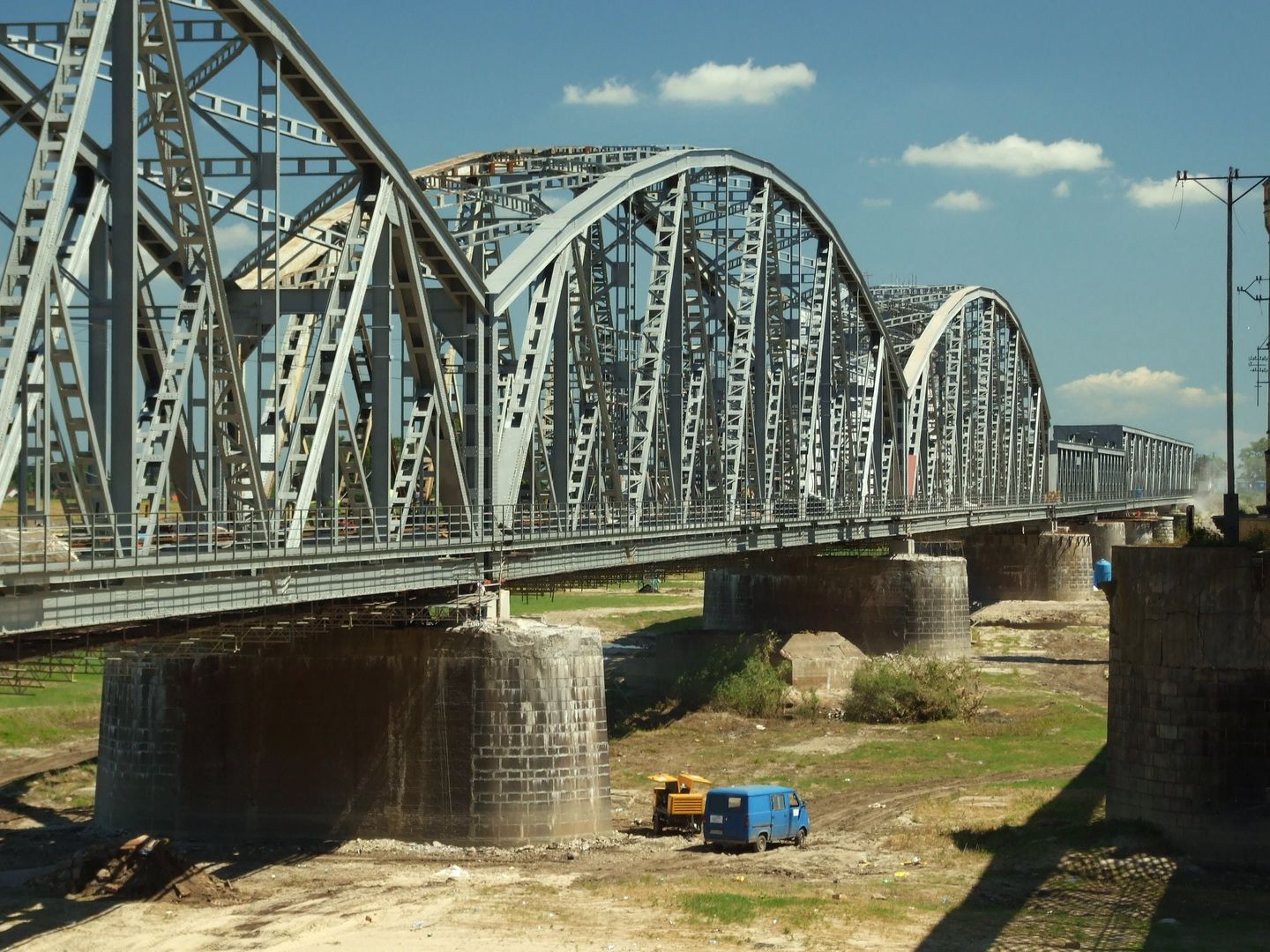Most kolejowy w Tczewie
6.69

W skrócie
Most kolejowy w Tczewie, wybudowany w 1891 roku, jest aktualnie najdłuższym mostem kolejowym w Polsce o długości 1030 m, łączącym Warszawę z Gdańskiem. Jego konstrukcja, zaprojektowana przez Johanna Schwedlera, ma formę stalowej kratownicy. Obiekt odgrywał istotną rolę w komunikacji kolejowej, a jego strategiczne położenie sprawiło, że stał się celem w czasie II wojny światowej; został wysadzony przez polskich saperów 1 września 1939 roku, aby uniemożliwić wroga przejazd. Most został odbudowany w latach 40. XX wieku, z czego pod koniec tego okresu przywrócono go do stałego użytku w 1958 roku, modernizując go na dwutorowy. Ruch na moście to głównie pociągi pasażerskie kursujące między Gdynią a Warszawą, jak również regionalne połączenia. Most stał się nie tylko centralnym punktem komunikacyjnym, ale również symbolem Tczewa, zwłaszcza że w jego sąsiedztwie znajduje się most drogowy z charakterystycznymi wieżami. W 1983 roku zakończono elektryfikację odcinka Malbork – Tczew, a w 2008 most zajął wysokie miejsce wśród polskich mostów pod względem rozpiętości przęseł. Ciekawostką jest, że most w Gdańsku w dzielnicy Stogi, choć również kolejowy, jest obecnie używany jedynie w ruchu towarowym. Tczewski most jest dziecięcym wyrazem inżynieryjnej myśli XIX wieku, a jego historia jest ściśle związana z burzliwymi losami Polski, co czyni go nie tylko obiektem inżynieryjnym, ale również istotnym punktem na mapie polskiej kultury i historii.
Mapa
Miasto
Tczew
Powiat (II Jednostka administracyjna)
Powiat tczewski
Województwo (I Jednostka administracyjna)
Województwo pomorskie
Państwo
Polska
2025 Wizytor | Wszystkie prawa zastrzeżone